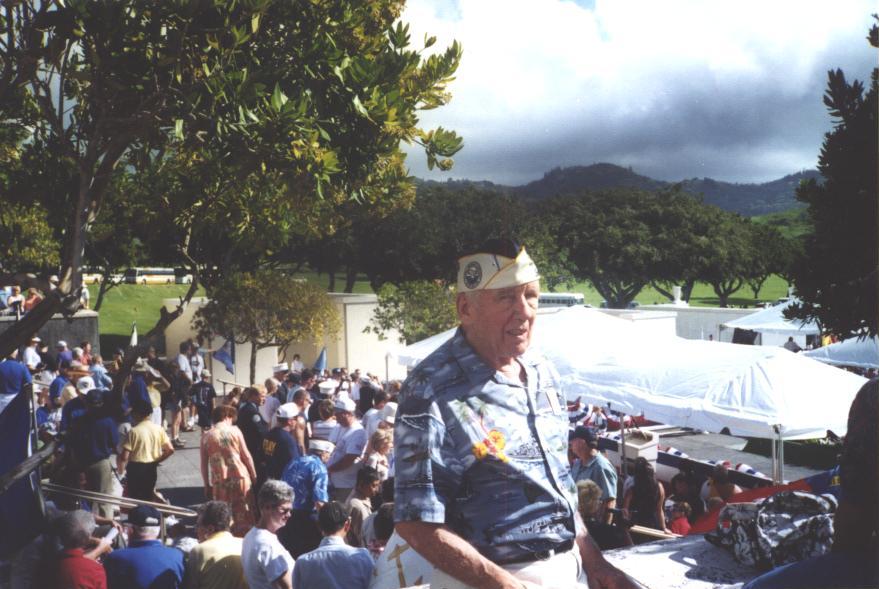Bernard J. Murphy US Navy USS Maryland |
On December 7, 1941 on was on the USS Maryland (BB-46). I was going to mass aboard the USS Oklahoma when general quarters sounded for us to go to our battle stations. My battle station was up in sky control. I was able to see everything that was happening at the time. I saw the explosion on the Arizona. The explosion was terrible. They never had a chance. The ship between us and the Arizona was the Tennessee. I will be eighty in September. |
Information provided by Barney Murphy. |
"I was scared as anything, I gotta tell you that," said Bernard J. Murphy. The 19-year-old was aboard the USS Maryland, which turned out to be one of the luckiest ships in the harbor, losing fewer than 10 men. Smoke from the devastated USS Arizona probably obscured the Maryland from enemy bombsights, Murphy said. From his lookout post on deck, Murphy could see smiles on some of the Japanese pilots' faces. "They knew they had us. They came in one right after the other," he said. It was about 7:55 a.m. when the well-rehearsed attack by 353 carrier-launched Japanese planes began. Had Murphy already left his ship for the 8 a.m. Sunday Mass on another, as he had planned, he would surely have died. Fellow parishioners gathered on the stern of the USS Oklahoma, moored next to the Maryland, died after that battleship was torpedoed, as did the priest. "It turns to anger, you know, your fear. The whole country was mad...I think the Japanese underestimated the American spirit," Murphy said. He described the Pearl Harbor sneak attack as "a stab in the back." Murphy frequently reminds himself he's lucky to be alive. He and his wife, Geraldine, have enjoyed a long and happy life, he said. |
